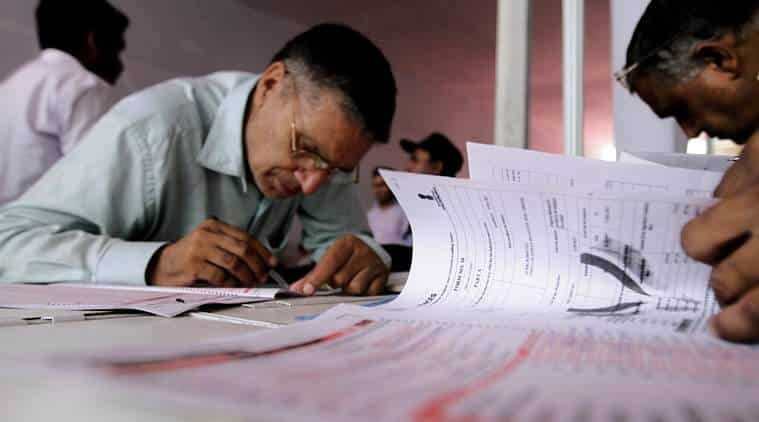Goods and services tax (GST) in New Zealand is essentially a tax imposed on all the goods and services directly sold to buyers and consumers in New Zealand. GST covers almost all goods and services. However, there are goods and services which are GST-exempt, and there are also zero-rated ones.
If you have an overseas business and you’re planning to sell to New Zealand customers, you might want to check this calculator on how to compute the GST that you’ll have to collect and remit. Border authorities can refuse to release your goods if it’s not clear whether GST has already been collected or not.
#1. Register For GST Transactions And Collections
You should register your business for GST transactions to avoid problems with documentation if you’re a covered overseas business. All businesses and persons involved in the sale of goods and services directly to New Zealand consumers that make an annual turnover of at least NZD$60,000 are required to register for GST payments. If you’re not yet making a yearly turnover that meets the minimum threshold, you’re not required to register for GST transactions.
If you’re not very sure whether your sales or gross revenues meet or exceed the minimum threshold, here are a few things you consider:
- You must charge and collect GST on any low-value goods that have a price tag of less than NZD$1,000 if they’re sold directly to New Zealand customers.
- Keep in mind that you’re not required to charge and collect GST on any goods and supplies directly sold to New Zealand businesses if these goods and supplies have an individual value that exceeds NZD$ 1,000.
- You must charge and collect GST on all online services and digital products if they’re directly sold to New Zealand customers.
- You have to consider the amounts paid by New Zealand customers for services associated with their purchases, such as delivery fees, freight insurance, handling costs, etc.
#2. Understand What Is Covered By GST
To avoid problems with GST documentation, you should have an understanding of what goods and services are covered by GST. You can check out information from Afirmo and other similar sites to help you understand your obligations under New Zealand’s GST on documentation and collection. Here are some of the basic rules and salient features of GST in New Zealand.
- GST rate – New Zealand’s GST rate is 15%. This is imposed on the final sale price of most taxable goods and services, including imports.
- GST-exempt products and services – Some products and services are exempt from the imposition of GST. These are sales by unregistered people, sales of private properties not used for business, and some business supplies. Some supplies are GST-exempt.
- Exempt supplies – You can claim GST exemption on some business purchases. Here are some supplies which are GST-exempt:
- Goods and services which were donated;
- Payment for financial services, including payment or collection of interest in whatever amount, payment for mortgages and loan charges, banking fees, and payments for stocks and shares;
- Office rent is also GST-exempt. Even landlords can’t claim GST on dwelling expenses such as mortgage and fire insurance, maintenance expenses on supplies and labor, among others;
- Interest expenses amount incurred by outstanding or overdue obligations;
- Fine metals are also exempt from GST. To be exempt, gold should have a fineness of at least 99.5%, silver at least 99.9%, and platinum at least 99%; and,
- Those in the home rental business are also exempt since the lease of a residential property under a head lease is also exempt.
- Zero-rated supplies – Some supplies are deemed zero-rated supplies. It is different from exempt supplies that are GST-free. The main distinction is that you can still claim GST on your expenses for zero-rated supplies, but you cannot claim GST for purchases of exempt supplies. Some examples of zero-rated supplies are:
- Goods that are exported;
- Sales that involve items that are of ongoing concern; and,
- Sale of land
#3. Select A Documentation Method And Collect On Covered Orders
If your annual turnover meets or exceeds the minimum threshold, the person responsible for filing GST returns for your company should be the one to register for GST. You should call New Zealand Inland Revenue after registration so they can activate your account. They will then send you an email to help you set up your account password. You have to accomplish this within 30 minutes of receiving the email.
You must charge and collect a GST of 15% on all orders for your goods and services. This GST rate has to be imposed on the final price of your goods and services. It should include the product value, shipping expenses, and insurance costs. You can choose from two options on what method to follow for the collection of GST.
- 1st Option – Your first option is to charge GST on low-value goods and let GST be collected at the border for high-value goods. Some tax collection specialists consider this first option a more cumbersome and complicated way of collecting GST.
For importers, you’ll only charge GST for imported goods that do not exceed NZD$ 1,000. For importations that exceed NZD$ 1,000, you let the border authorities do the collection and don’t include this in your receipts.
- 2nd Option – The second option would be to collect GST on all goods, both those that are priced below NZD$1,000 and those priced at or above NZD$1,000. Tax specialists believe this to be a more straightforward and thus simplified way of charging and collecting GST.
For those exporting goods and services directly to businesses and buyers, you have to impose a 15% GST on the final sale price of all the goods and services that you sell. The final sale price should include shipping costs, insurance expenses, and service fees.
#4. Update Customs On Shipping Documentation
To avoid any problems with GST documentation, make sure that you always have additional documentation about the goods shipped to you. It would be a good business practice to have complete and updated information about the goods sent to you by your seller or supplier.
You would be required by customs officials to identify which items or goods in your shipment have been charged with and collected GST. They won’t let go of your shipment if you have incomplete or unclear documentation, even if you show them a bill of lading. You must show documentation that indicates GST has already been charged and paid for and which among those goods in your shipment have been collected.
If you’re a seller, you can provide a copy of the customer receipt. It has to indicate that GST has already been paid and collected. If you’re an importer, you can show a copy of the commercial invoice for the purchase. You can also note that the GST has already been paid and collected in the comments section.
Conclusion
New Zealand’s GST rules are straightforward. You must register for GST transactions if your annual turnover meets the threshold. You have to charge and collect GST on all covered goods. If you’re an overseas seller, you should provide clear documentation to the border authorities, such as receipts or tax invoices. These should have complete information, including the final sale price and amount of GST charged and collected. Subsequently, you should remit the GST you collected not less frequently than each quarter.






